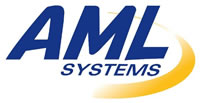An innovative solution to deal with headlight condensation problems
Focusing on the constantly changing demands of its customers, AML Systems, a subsidiary of the Johnson Electric Group, proposes lasting solutions to address the demands of automobile mass production.
We take stock of things with Hassan Koulouh, Innovation manager at AML Systems, a subsidiary of Johnson Electric.
Where are you positioned in the market today?
AML Systems develops new products and functional features to improve headlight performance. These improvements are aimed at:
- first of all, increasing lighting efficiency and therefore driver safety and driving comfort
- and also finding solutions to complex technical problems, for instance condensation.
So that is why you are developing headlight actuating devices. Just how far have you progressed?
Innovation is part of our DNA and it is the core of our strategic plan.
Our expertise in the field of actuating devices and headlights is renowned world-wide today. Our experience means that we understand the problems facing our customers, enabling us to propose pragmatic and affordable solutions.
Approximately 3 years ago we came up against the problem of condensation in headlights.
Condensation is a natural phenomenon, and nobody really thought about it when headlights contained bulbs, because the condensation disappears after a few minutes because of the heat given off by the bulbs.
With the emergence and rapid development of LEDs, giving off cold light, condensation is no longer dissipated naturally.
We quickly realised that an innovative solution had to be found to eliminate headlight condensation, which not only worried the owners of cars affected by the phenomenon, but which when severe, could affect the car lighting performance.
This led us to the co-development of an actuating device known as the CMD (Condensation Management Device), working through a partnership with W. L. GORE & Associates, offering expertise in condensation management and the manufacture of membranes of ePTFE (expanded polytetrafluoroethylene) which might be suitable for inclusion in a car headlight.
The idea is to prevent condensation from forming by reducing the humidity level inside the headlight to a sufficiently low level to prevent any condensation from forming.
In other words, with our partner W. L. GORE & Associates, we decided to tackle the problem at the root, rather than deal with the symptoms. This led us to devise an efficient and reliable solution, unlike existing technologies which only minimize condensation, and not always durably.
Our joint efforts resulted in the CMD, which we are proud to present officially for the first time at the VISION Congress.
What are your development perspectives for this innovation?
We believe that the future of this innovation is looking bright.
Condensation in a headlight causes much dissatisfaction among vehicle owners, giving them the impression that the headlight is defective. Car owners then often request their replacement, a costly solution if the headlight incorporates advanced technologies, and at the expense of the manufacturer.
The current design of the CMD is aimed firstly at premium vehicles, especially those driven in areas where humidity is particularly high, for instance in Asia.
The importance to manufacturers in terms of image related to condensation occurring in headlights is significant and the CMD is a true and innovative solution which can resolve the problem.
Ulrike Geissler from W. L. GORE & Associates and I will be your privileged contacts on the subject
Our lighting expertise centre is located at Le Bourget, near Paris, and we look forward to answering any questions you may have from the CMD presentation at the VISION Congress.




